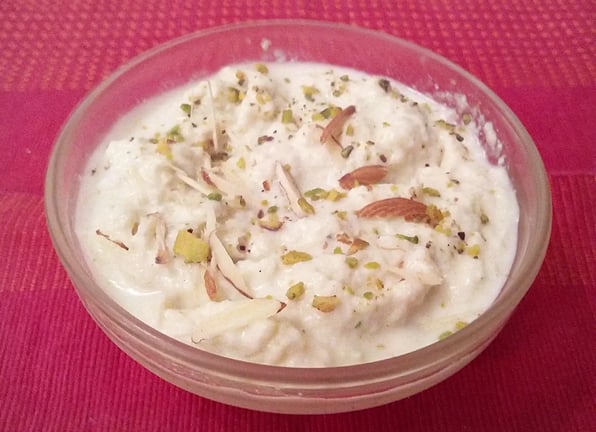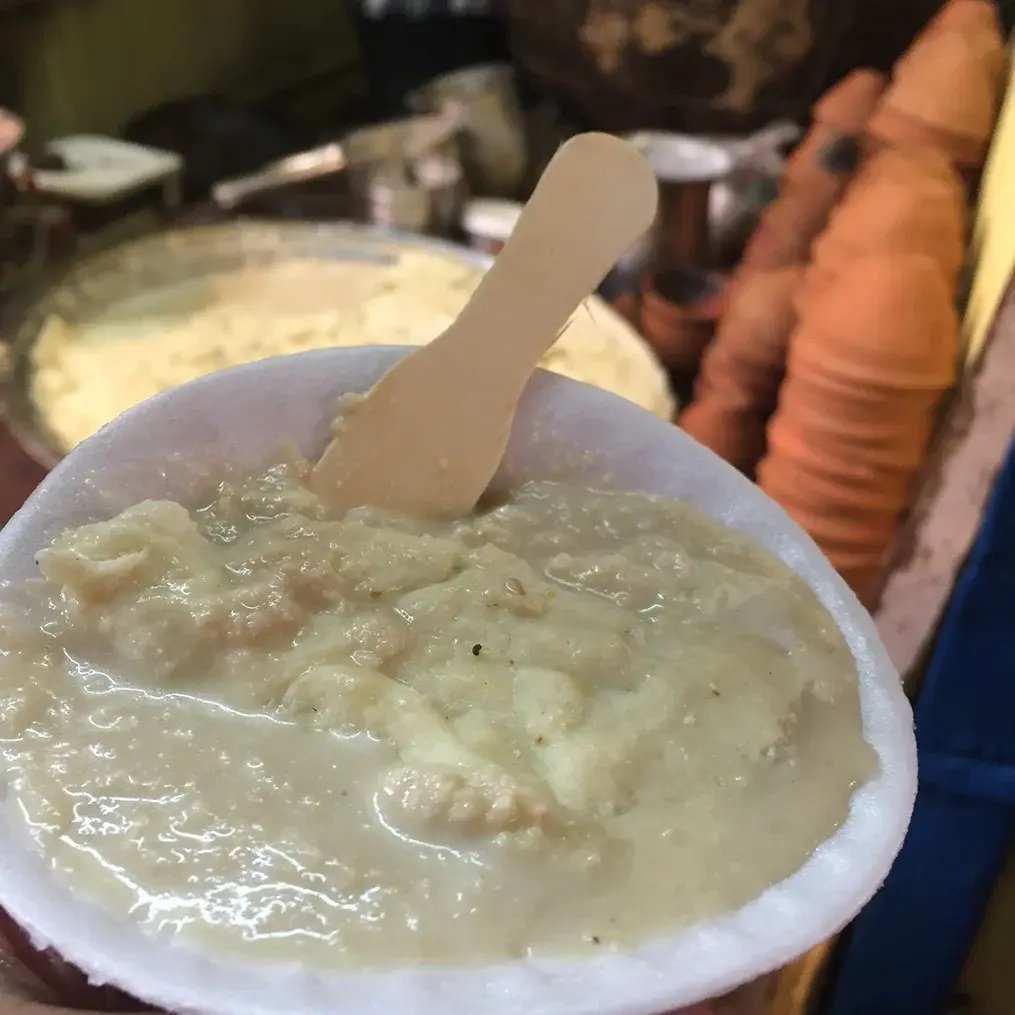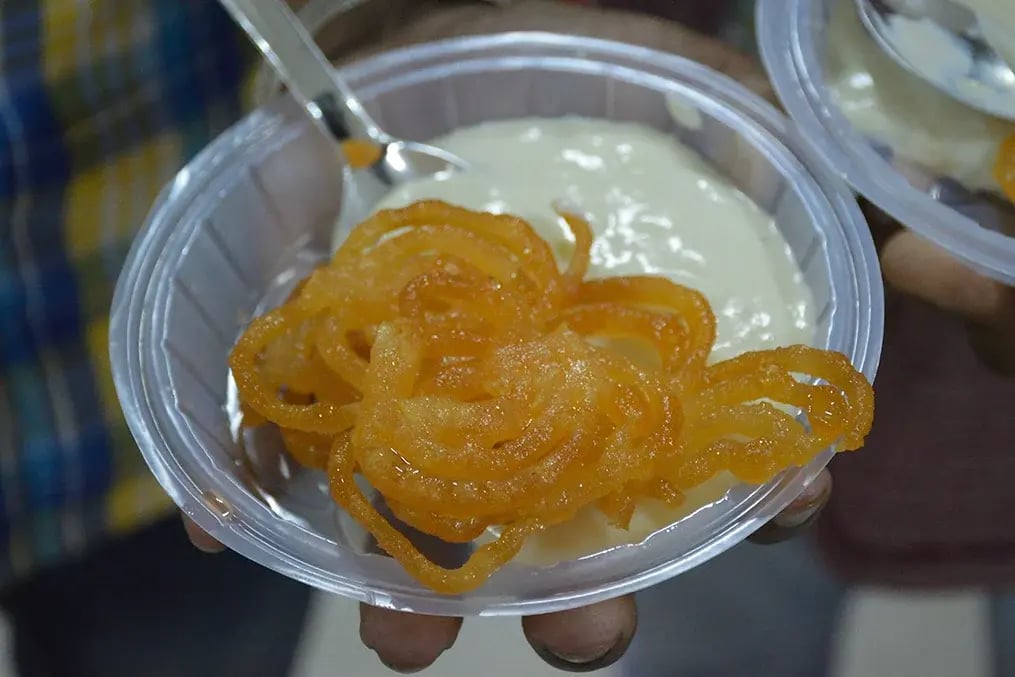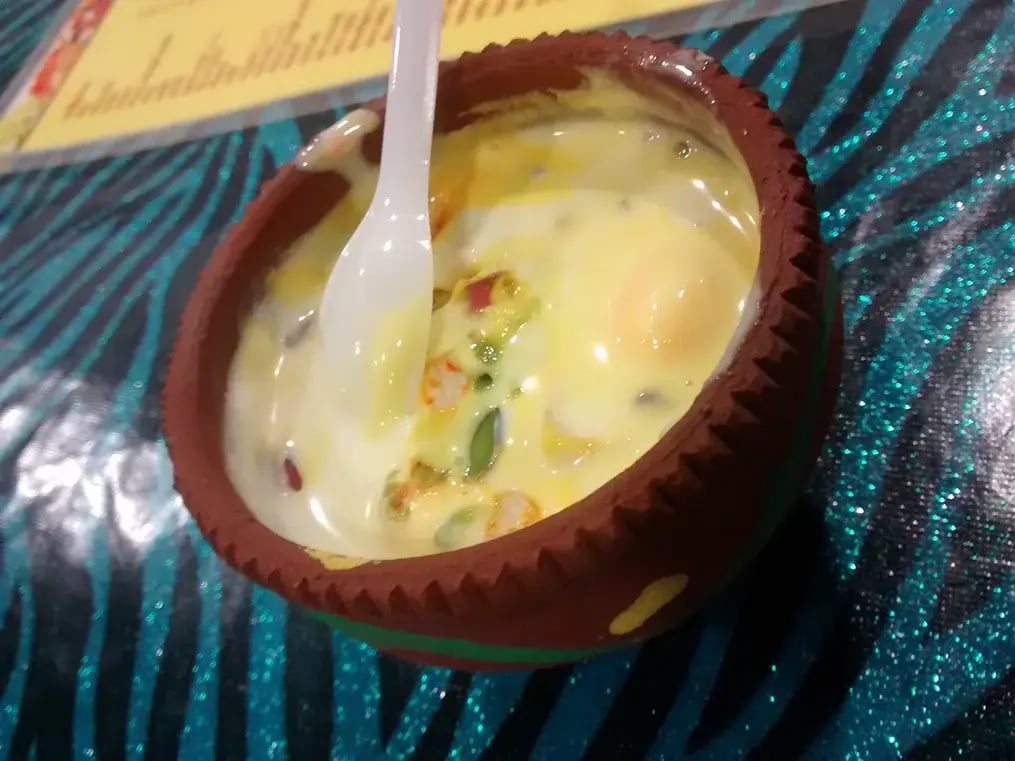Home![]() Articles
Articles![]() Among Homemade Indian Sweets Recipes Is This Detailed Guide so You Can Make Rabri the Authentic Way
Among Homemade Indian Sweets Recipes Is This Detailed Guide so You Can Make Rabri the Authentic Way
Yes, you have to be patient and consistent. But that's exactly what makes rabri such a rewarding dish to make. Just follow this Homemade Indian Sweets Recipe

Rabri or rabdi is a rich and creamy dish that’s made by reducing milk and flavouring it with an assortment of scents and foods. It’s a popular dish in the northern part of India and is enjoyed with a variety of other dishes, like rabri jalebi and mango rabri. To make a traditional rabri, simply follow this Homemade Indian Sweets Recipe and remember to stay calm and patient.
Ingredients:

- 25 litres whole milk
- 3 tablespoons sugar or add as required
- 6 green cardamoms, crushed in mortar-pestle
- 15 saffron strands (kesar) – crushed
- 1 teaspoon rose water or kewra water
- 2 tablespoons almonds (badam) – blanched and sliced
- 2 tablespoons pistachios (pista) – blanched and sliced
Directions:

- Soak the almonds and pistachios in hot water for about 30 minutes. Set aside. Once the time has lapped, drain the water and peel the nuts. Slice or sliver them. Set aside.
- In a thick kadai or non-stick pan, add the milk and start heating it on medium heat. The milk will start to froth and malai will form on the top. Stir occasionally as the milk heats. As the malai forms, keep shifting it to the side and making it stick to the sides of the pan. Switch the heat to low and let the milk continue to simmer. Carefully collect all the malai on the sides and keep stirring the milk so it doesn't burn from the bottom. Don't mix too much or the malai won't form, and that's essential.
- Like this, the milk will start to reduce. Once it has reduced to half, add the sugar. You can add more or less sugar depending on your taste preferences. Then add the crushed saffron and cardamom powder. Stir gently. Then turn off the heat.
- Now scrape all the malai from the side and mix it back into the thickened milk. Stir gently. Then add the chopped nuts and rose water. Stir again, and remember to be gentle as you stir.
- Garnish with more nuts and serve the rabri hot or cold.
- To store, transfer to an airtight container and refrigerate. The rabri will continue to thicken as it cools. So if you're going to serve it cold, let it have a slightly thinner consistency so that it can bind together. You can store it for about 4 days in the fridge.
Notes, tips and tricks:

- Use a pan or kadhai with a wide mouth. The large surface area allows for more milk to evaporate and create malai. Also ensure that whatever vessel you use has a thick bottom so that the milk doesn't burn from continuous exposure to the heat.
- Use full fat or whole milk. If you try to make it in skimmed or low fat milk, it won't create malai in the same way, which is the essence of the dish.
- The milk needs to simmer on low heat so that it does not burn or brown from the bottom. This cooking is the most important part of making rabri so be mindful of what is happening. You don't need to stir too much, just so that the milk doesn't burn. And gently collect all the malai on the sides. Don't stir too much or malai will stop forming.
- You can add any nuts or flavours of your choice, ranging from almonds, cashews and pistachios to pine nuts, and flavourings like vanilla extract, kewra water or saffron. You can also add fruits like strawberries or mangoes for a seasonal rabri. The nuts don't necessarily need to be blanched. They can be chopped and added as is. But make sure they’re unsalted nuts.
- If you want more rabri, simply double the recipe. But remember that the more the milk, the longer it will take to cook.
- Remember that above all, making rabri is a slow process. The heat should remain on low and you have to be patient as layer after layer of malai forms and is saved at the sides. If you try to rush the process, you might end up with burnt milk or a rabri that has a bad consistency. So be patient. Of course, there are faster ways of making rabri, like by using condensed milk. But this is the authentic recipe and will yield the best results.






















